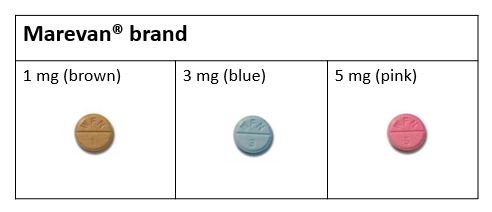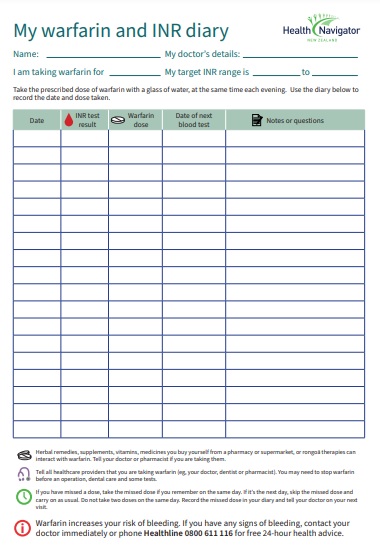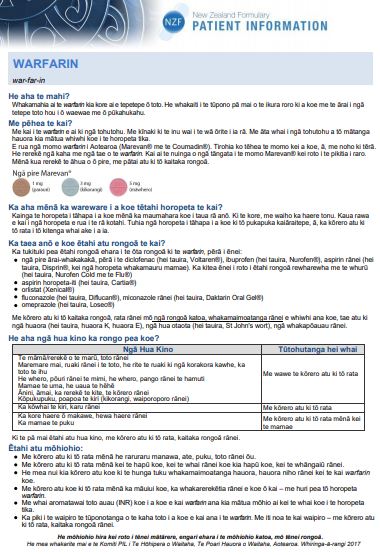Check that your doctor has given you the following:
- Information about your dose of warfarin and duration of treatment.
- A prescription for warfarin with the brand and strength specified.
- Your INR target range.
- A blood test form (which may be sent directly to your local blood service) and the date of your next blood test.
- Where you can have your blood test.
- A warfarin and INR diary.










